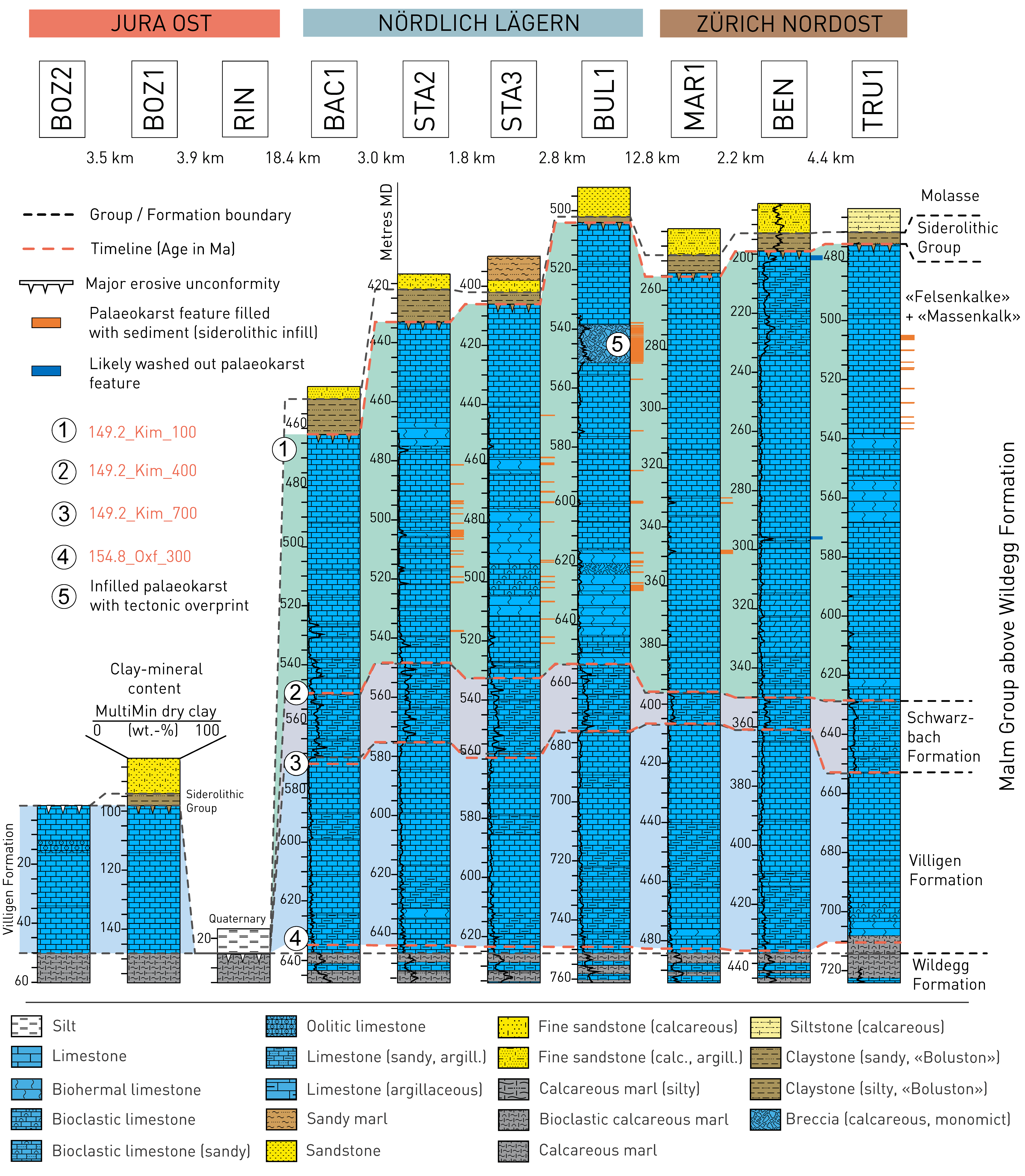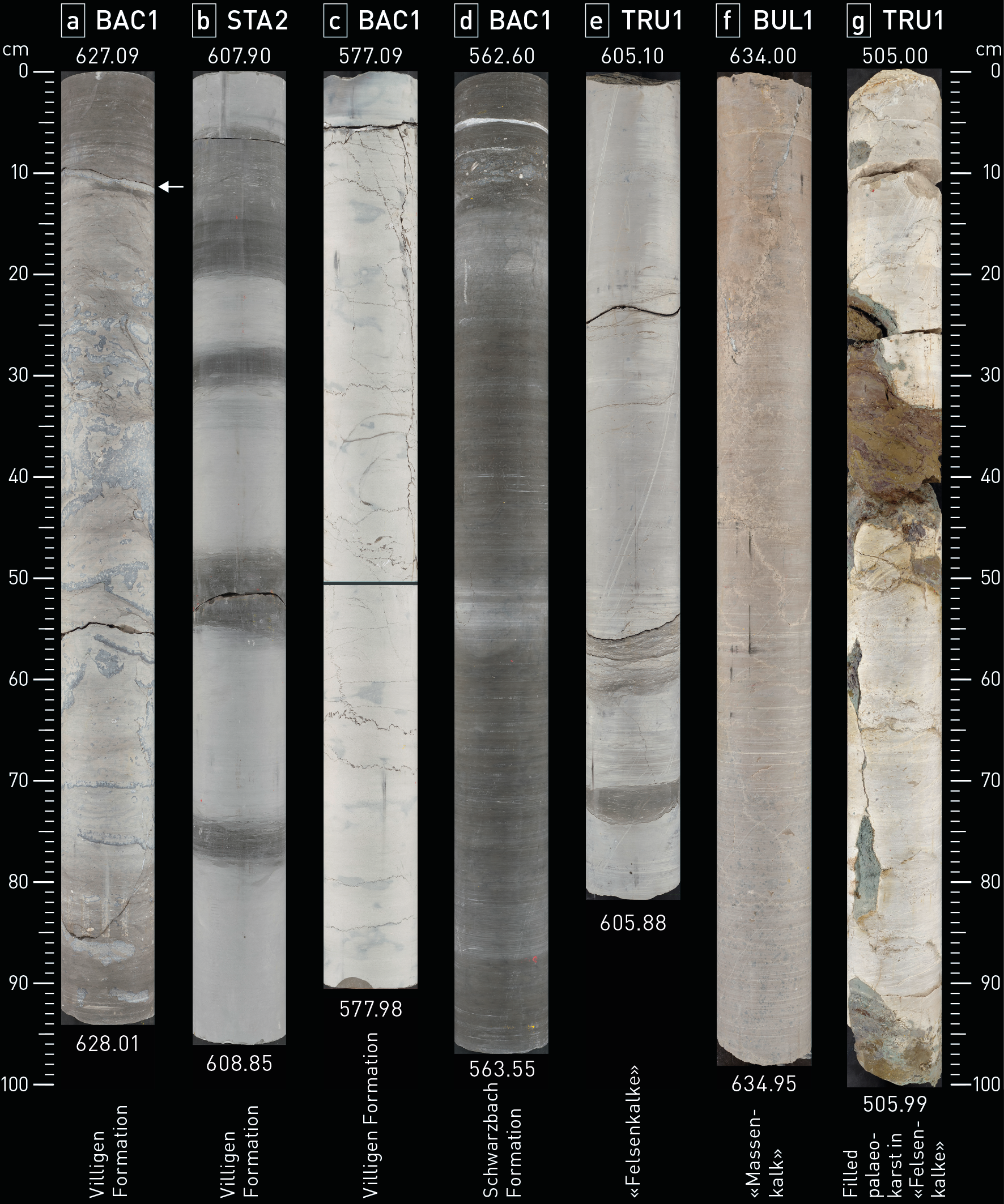The Villigen Formation, Schwarzbach Formation, «Felsenkalke» and «Massenkalk» were deposited in a basinal domain of the epicontinental sea that connects the Celtic or Rauracian Platform in the west and the Swabian Basin in the northeast (Fig. 3‑10). The nearest mainlands were the London-Brabant and Rhenish Massifs in the north and the Bohemian Massif in the east. To the south, the Helvetic and Briançonnais shelf margin merged into the Piemont – Liguria Ocean (Gouffon 2024). Calcareous oolites were deposited on the carbonate platform to the west and mostly at the platform margin coral bioherms also grew (Olten Member of the Balsthal Formation; Gygi 1990). The depositional environment of the study area was dominated by a carbonate ramp, locally with bioherms partly in a basinal setting and sedimentation rates that were generally high (Fig. 4‑5, Fig. 4‑6). However, glauconitic, fossiliferous and nodular horizons indicate depositional phases with reduced sedimentation rates. Sponges occur throughout the Malm Group above Wildegg Formation, particularly extensive sponge bioherms exist in the Hornbuck Member of the Villigen Formation and in the «Massenkalk». In comparison to the Early Oxfordian, the environment documents a general decrease in terrestrial input and an increase in carbonate production also in deeper water. An exception is the time interval during which the deposits of the Schwarzbach Formation were formed, which reflects an intermittent relative increase in argillaceous input relative to carbonate production and input. The variations in terrestrial and carbonate input could reflect variations related to climate and eustatic sea level changes (Gygi 2000b).

Fig. 4‑51:Stratigraphic borehole correlation of the Malm Group above Wildegg Formation
For lithological nomenclature refer to Naef et al. (2019). Clay-mineral content after Becker & Marnat (2024). Some of the boundaries and lithologies as discussed in the original reports were adjusted to integrate all presented borehole data.

Fig. 4‑52:Selected core photos of the Malm Group above Wildegg Formation
(a) Top Hornbuck Member (627.20 m) with grey to beige biohermal limestone, very fossiliferous (sponges, echinoderms) and dark grey bioclastic calcareous marl; (b) medium light limestone, with interlayers of dark grey argillaceous to calcareous marl; (c) light grey limestone, strongly bioturbated with thin seams of claystone, mostly reduced to stylolites; (d) dark grey bioclastic calcareous marl, glauconitic, fossiliferous (bivalves, belemnites, crinoids), bioturbated, with grey interlayers of limestone, argillaceous, bioturbated; (e) medium grey limestone, with thin beds of calcareous marl; (f) beige-grey, massive limestone, fossiliferous (many sponges); (g) beige limestone with palaeokarst fissures filled with variegated claystone.

